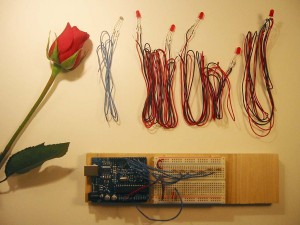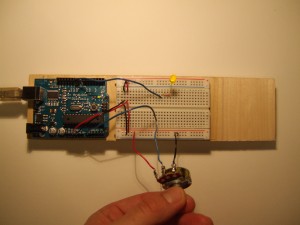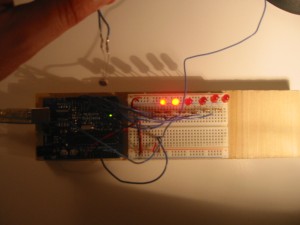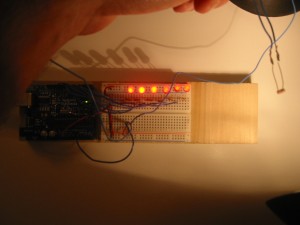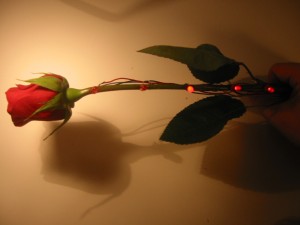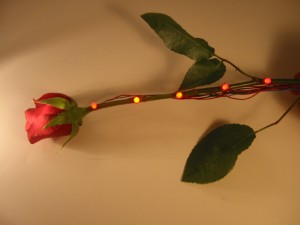For this week’s lab, I was thinking of a meaningful way to use a sensor with a symbolic object. Because all plants and flowers need light to stay healthy and grow, I thought it would be interesting to create a rose that senses that amount of light it requires to stay strong and healthy. I chose a rose because people are generally very responsive to this object.
The first step was to create a simple variable switch that controls the intensity of light of a single LED
Before I installed the LED’s onto the rose, I wanted to make sure that both my program and hardware setup worked properly. To achieve this, I simply set conditions for each LED. In this prototype, the amount of light detected by the photocell sensor determines whether an LED should stay on or off. I arranged this so the first LED from the left requires the lowest value of light intensity, while the last one on the right requires the highest amount of intensity for it to turn on.
Now the fun stuff! The first step was to insert the photocell sensor into the center of the rose. The slitting of the rose required patience so that I would not damage the flower’s overall aesthetic.
To insert the LED’s into the stem of the rose, I cut holes at every 1.5 inches. I placed the LED that required the most amount of light intensity at the very top, with the LED that required the minimal amount of light intensity on the last hole. In this image, the rose is receiving a little more than half of the amount of light it needs in order to stay healthy.
Now we know the rose is receiving the recommended amount of light intensity in order to stay healthy!
As an experiment, let’s see how my date responds to me when I give her this sensing rose!
